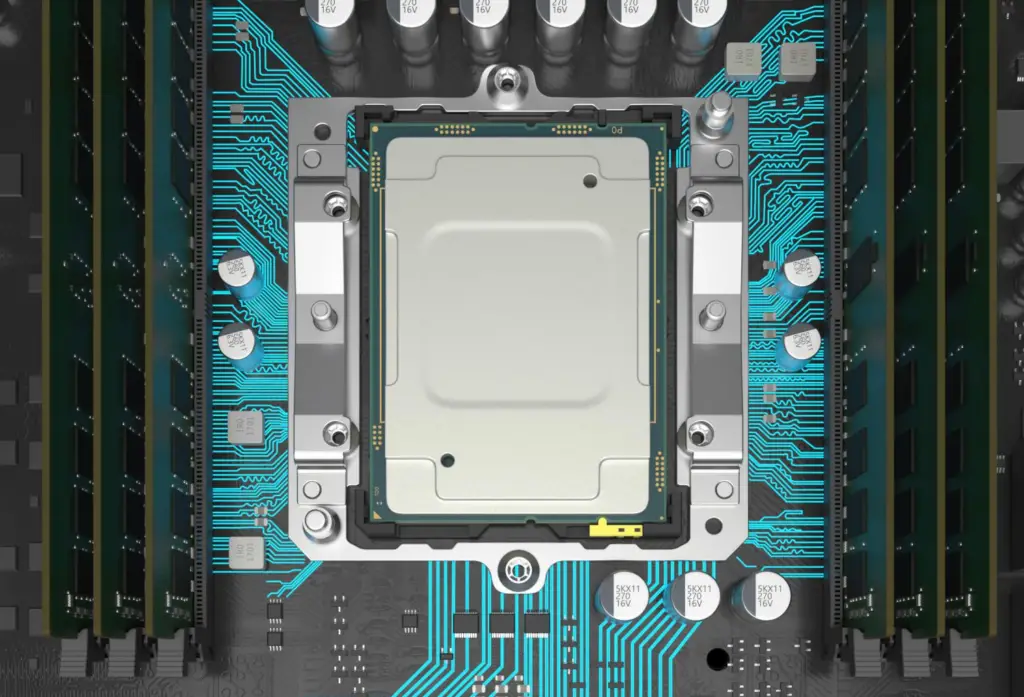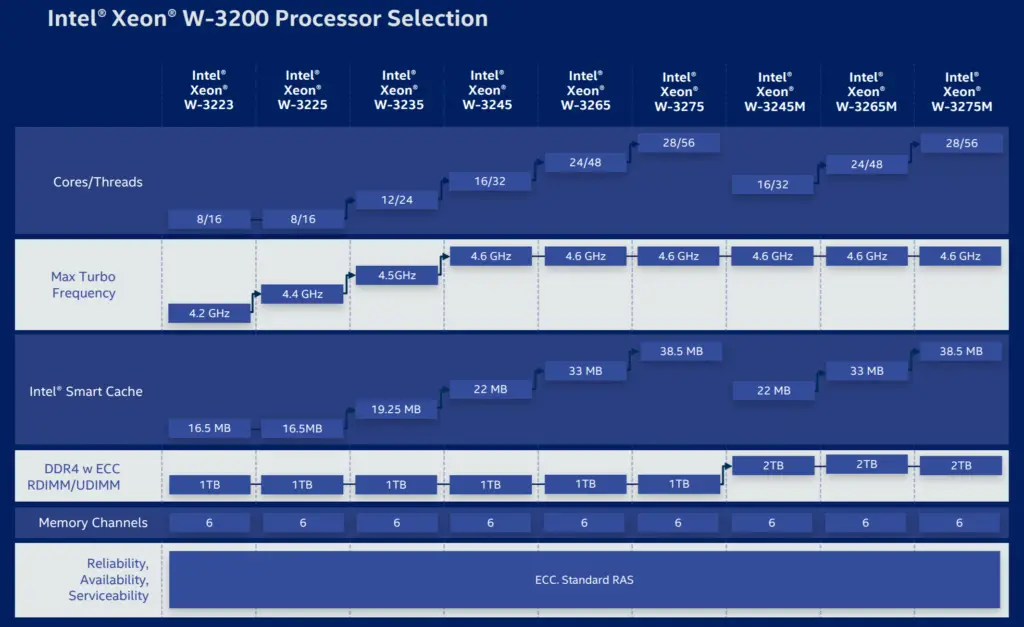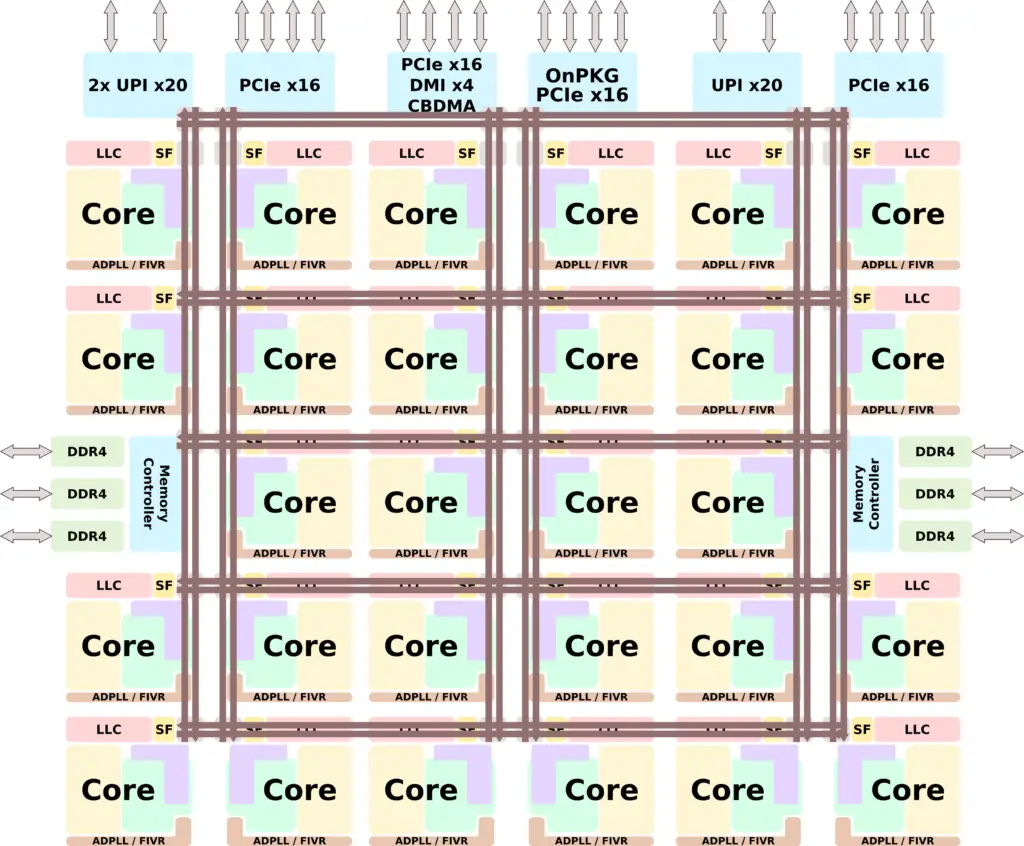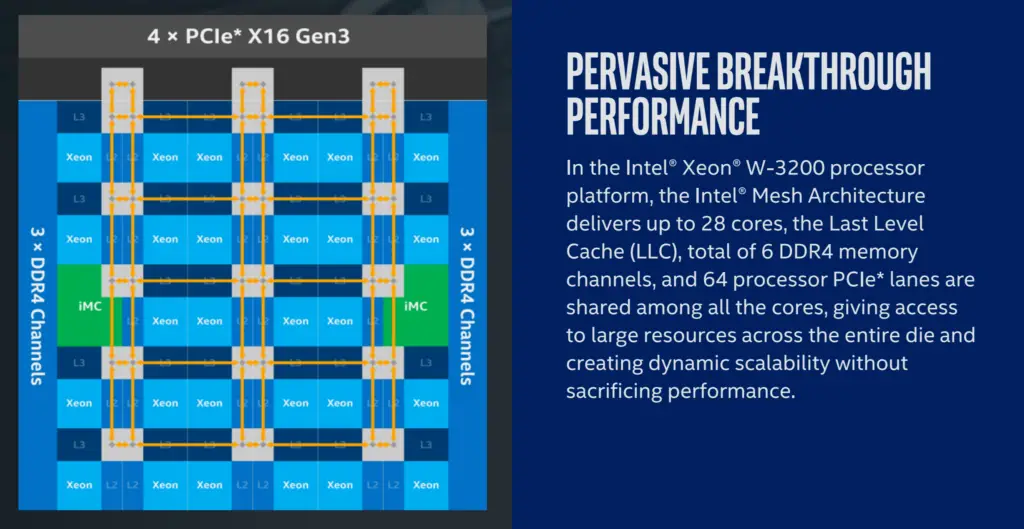Intel Rolls Out Cascade Lake Xeon W Processors

In tandem with the Apple Mac Pro announcement, Intel has launched their second-generation Xeon W processors.
Cascade Lake 3000-Series Xeon W
Intel is launching nine new SKUs – ranging from eight cores to twenty-eight cores. Unlike the original W-2100 series Xeon W processors which used the FCLGA-2066 packaging, those new models make use of the FCLGA-3647 package. That’s the same packaging used for the Skylake SP and Cascade Lake SP processors as well as the lone Xeon W-3175X chip.
In total, nine new Cascade Lake workstation processors were launched. All processors have the same features including AVX-512 support with 2 FMA units as well as support for up to 1 TiB of hexa-channel DDR4-2933 memory. There are two additional “M”-suffixed SKUs which have 2 TiB extended memory support. A new feature that Intel added to the 3200-series is Turbo Boost Max 3.0. Interestingly, none support Optane DC Persistent Memory which is the principal feature of Cascade Lake.
The new 3200-Series Xeon W processors are shown below.
| Cascade Lake-based Xeon W Processors | |||||||
|---|---|---|---|---|---|---|---|
| Model | Price | Cores | Threads | TDP | Base | TBT 2.0 | TBMT 3.0 |
| W-3223 | $ 749.00 | 8 | 16 | 160 W | 3.5 GHz | 4 GHz | 4.2 GHz |
| W-3225 | $ 1,199.00 | 8 | 16 | 160 W | 3.7 GHz | 4.3 GHz | 4.4 GHz |
| W-3235 | $ 1,398.00 | 12 | 24 | 180 W | 3.3 GHz | 4.4 GHz | 4.5 GHz |
| W-3245 | $ 1,999.00 | 16 | 32 | 205 W | 3.2 GHz | 4.4 GHz | 4.6 GHz |
| W-3265 | $ 3,349.00 | 24 | 48 | 205 W | 2.7 GHz | 4.4 GHz | 4.6 GHz |
| W-3275 | $ 4,449.00 | 28 | 56 | 205 W | 2.5 GHz | 4.4 GHz | 4.6 GHz |
| 2 TiB Extended Memory Models | |||||||
| W-3245M | $ 5,002.00 | 16 | 32 | 205 W | 3.2 GHz | 4.4 GHz | 4.6 GHz |
| W-3265M | $ 6,353.00 | 24 | 48 | 205 W | 2.7 GHz | 4.4 GHz | 4.6 GHz |
| W-3275M | $ 7,453.00 | 28 | 56 | 205 W | 2.5 GHz | 4.4 GHz | 4.6 GHz |
x64 PCIe Lanes
One of the bigger additions to the new 3200-Series is the exposure of x16 additional PCIe lanes to the platform. Both the Skylake and Cascade Lake dies had the x16 lane root complex available on-die. Until now Intel reserved those lanes for the on-package Omni-Path Host Fabric Interface (HFI) integration. With those parts, Intel has decided to expose those lanes to the platform bringing the total PCIe count to 4×16 for a total of 64 lanes. It’s worth pointing out that with x64 PCIe lanes, those processors are Intel’s highest I/O parts. The move is designed to improve the competitiveness of those parts against AMD Threadripper which have 60 PCIe lanes available.
Update: This article was updated following a confirmation from Intel regarding the additional PCIe lanes.
–
Spotted an error? Help us fix it! Simply select the problematic text and press Ctrl+Enter to notify us.
–



